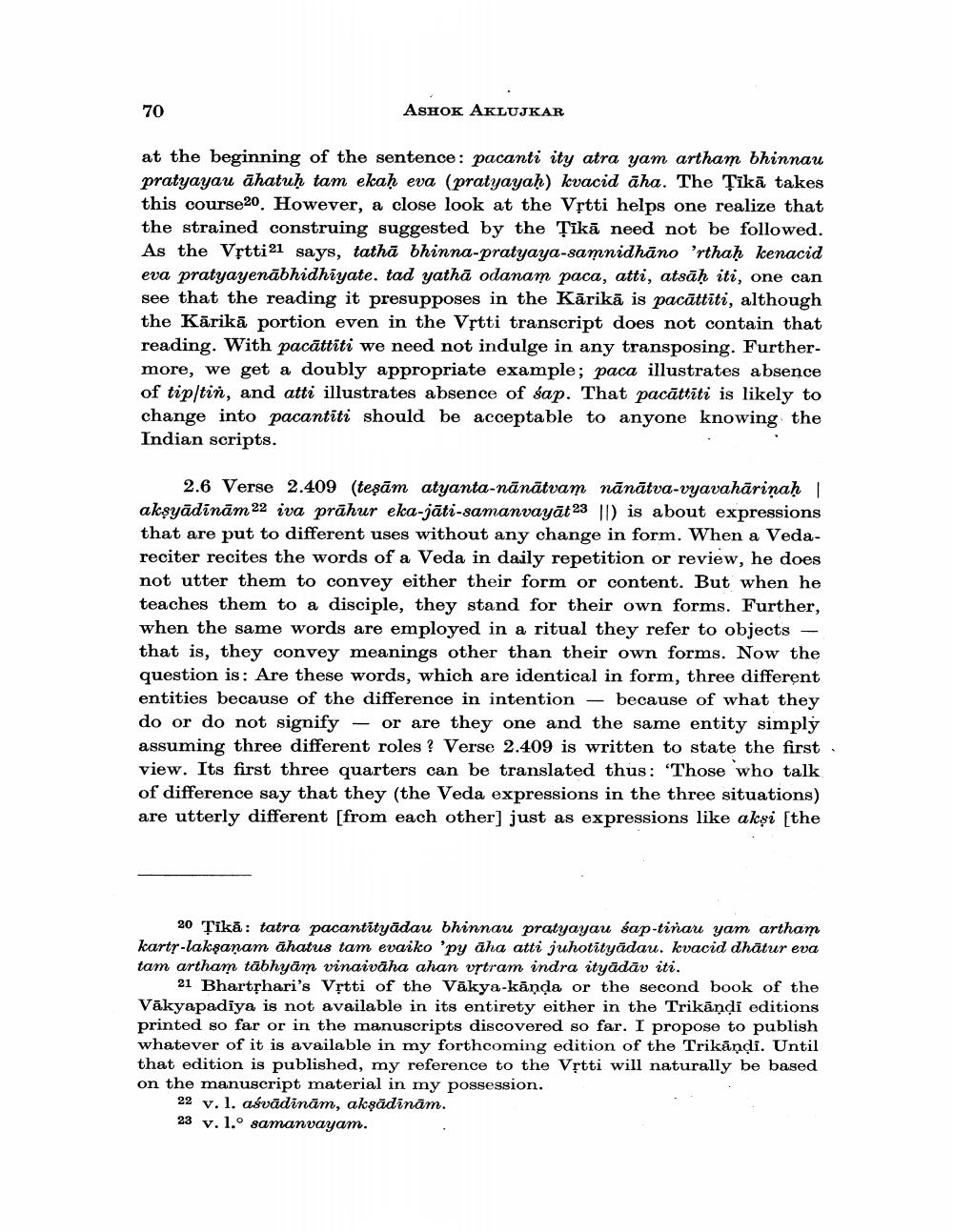Book Title: Emendation Of Some Verses In Bhrtharis Trikandi Author(s): Ashok Aklujkar Publisher: Ashok Aklujkar View full book textPage 8
________________ 70 ASHOK AKLUJKAR at the beginning of the sentence: pacanti ity atra yam artham bhinnau pratyayau āhatuħ tam ekaḥ eva (pratyayaḥ) kvacid āha. The Tīkā takes this course20. However, a close look at the Vștti helps one realize that the strained construing suggested by the sīkā need not be followed. As the Vrtti21 says, tathā bhinna-pratyaya-samnidhāno 'rthah kenacid eva pratyayenābhidhiyate. tad yathā odanam paca, atti, atsāḥ iti, one can see that the reading it presupposes in the Kārikā is pacāttiti, although the Kārikā portion even in the Vrtti transcript does not contain that reading. With pacāttiti we need not indulge in any transposing. Furthermore, we get a doubly appropriate example; paca illustrates absence of tipstin, and atti illustrates absence of sap. That pacāttīti is likely to change into pacantiti should be acceptable to anyone knowing the Indian scripts. 2.6 Verse 2.409 (teşām atyanta-nānātvam nānātva-vyavahāriņaḥ akşyādinām 22 iva prāhur eka-jāti-samanvayāt 23 II) is about expressions that are put to different uses without any change in form. When a Vedareciter recites the words of a Veda in daily repetition or review, he does not utter them to convey either their form or content. But when he teaches them to a disciple, they stand for their own forms. Further, when the same words are employed in a ritual they refer to objects that is, they convey meanings other than their own forms. Now the question is: Are these words, which are identical in form, three different entities because of the difference in intention – because of what they do or do not signify – or are they one and the same entity simply assuming three different roles ? Verse 2.409 is written to state the first view. Its first three quarters can be translated thus: "Those who talk of difference say that they (the Veda expressions in the three situations) are utterly different [from each other) just as expressions like akşi [the 20 Tikā: tatra pacantityādau bhinnau pratyayau sap-tinar yam artham kartr-laksanam āhatus tam evaiko 'py aha atti juhotityādau. kvacid dhätur eva tam artham tabhyām vinaivāha ahan vstram indra ityādāv iti. 21 Bhartphari's Vrtti of the Vākya-kānda or the second book of the Vākyapadiya is not available in its entirety either in the Trikāndi editions printed so far or in the manuscripts discovered so far. I propose to publish whatever of it is available in my forthcoming edition of the Trikāņdi. Until that edition is published, my reference to the Vrtti will naturally be based on the manuscript material in my possession. 22 v. l. aśvādinām, aksādinām. 23 v. 1.° samanvayam.Page Navigation
1 ... 6 7 8 9 10 11 12
